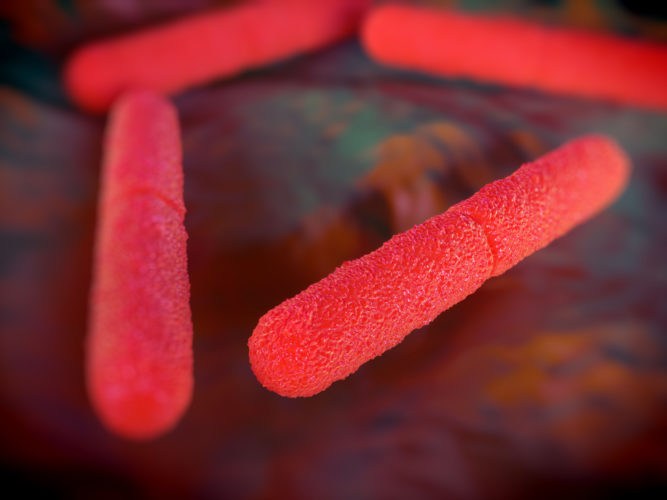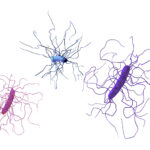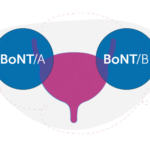Mutated botulinum neurotoxin B: A stronger player in the Botox world?

Famously associated with smoothing out wrinkles, botulinum toxin — better known as Botox — has been in use for 40 years now. Initially approved as a treatment for crossed eyes and then facial wrinkles, its on- and off-label uses today extend to urinary incontinence, migraines, perspiration, spasticity and even depression. But the diffusion of the toxin away from the injection site can also cause side effects like difficulty swallowing and drooping of the face.
Now, scientists have created an altered botulinum toxin, one that works much better than its natural version and with potentially fewer side effects. Their findings are written up in Nature Communications.

“We have developed an engineered botulinum neurotoxin with improved efficacy for therapeutic applications,” says Min Dong, PhD, an expert on botulinum toxins at Boston Children’s Hospital and senior author on the paper.
Not all botulinum neurotoxins are used to make Botox; the brand name refers only to botulinum toxin A. It is just one of seven botulinum toxins (named A through G) made by the bacterium Clostridium botulinum. While toxin B has also been commercially adopted, it is toxin A that takes up the lion’s share of a $3.4 billion market.
Making a better botulinum toxin
Botulinum neurotoxins (BoNTs) work by preventing the release of the neurotransmitter acetylcholine at neuromuscular junctions, which interferes with neuron “firing.”
But a problem in using them medicinally is that the toxin tends to drift away from the injected areas, causing side effects.
Dong’s group has successfully concocted a toxin B that can bind to its receptors better than the toxin B presently in use. This means that lower quantities of the toxin will be required for its therapeutic effects and fewer molecules will diffuse away. A better botulinum neurotoxin B will create more possibilities for treatments. “We hope our new toxin will reduce the chance of side effects compared to currently available BoNT/B,” says Dong.

Toxin B’s binding to the receptor depends on the amino acids in the region of the receptor that interacts with it. Dong and his colleagues had originally found that a difference of one amino acid in this spot makes binding stronger in rats than in humans. For this reason, they decided to fiddle with the corresponding site in the toxin to improve binding.
To develop a modified toxin that would outperform the original, Dong’s group systematically mutated each of the 19 amino acids that form the binding pocket in the toxin, one at a time, and tested the modified toxins in cultured neurons. Changing out one of a few amino acids individually led to a stronger interaction between the toxin and its receptor. When Dong’s lab replaced amino acids at two different positions simultaneously, the efficiency of the toxin was improved by a factor of 11.
A smoother path ahead
A better binding toxin B might expand treatment options. Toxins A and B are individually suited for different ailments; while the A variant may work better for migraines and aesthetic purposes, the B variant may function better for excessive sweating or hypersalivation. Toxin B might also be effective in patients who have developed antibodies against toxin A.
At the moment, Kentucky-based Solstice Neurosciences is the only manufacturer of botulinum toxin B in the United States. Sold under the brand name Myobloc, it is FDA-approved for cervical dystonia, a painful movement disorder of the neck. Dong believes that the toxin B crafted by his lab will have broader uses in medicine.
Testing the efficiency of this modified toxin in animal models is their next step. Dong’s lab has also worked with Ipsen, a French pharmaceutical company with offices in Cambridge, Massachusetts, to further develop this engineered toxin B.
Related Posts :
-

Could a GI bug’s toxin curb hard-to-treat breast cancer?
Clostridium difficile can cause devastating inflammatory gastrointestinal infections, with much of the damage inflicted by a toxin the bug produces. ...
-

A new approach to C. diff? Targeting the inflammation, not the bacteria
Clostridium difficile (C. diff) intestinal infections can cause severe, debilitating diarrhea in patients who are hospitalized or on immunosuppressive therapies. ...
-

Preventing ‘chemo brain’ with antioxidants targeting the spinal fluid
Up to three-quarters of patients receiving cancer chemotherapy suffer from “chemo brain” — a side effect that makes it harder to ...
-

Building a bladder-specific Botox
Botulinum toxins are bacterial neurotoxins that also have a range of therapeutic uses. In urology, injections of these potent substances ...





